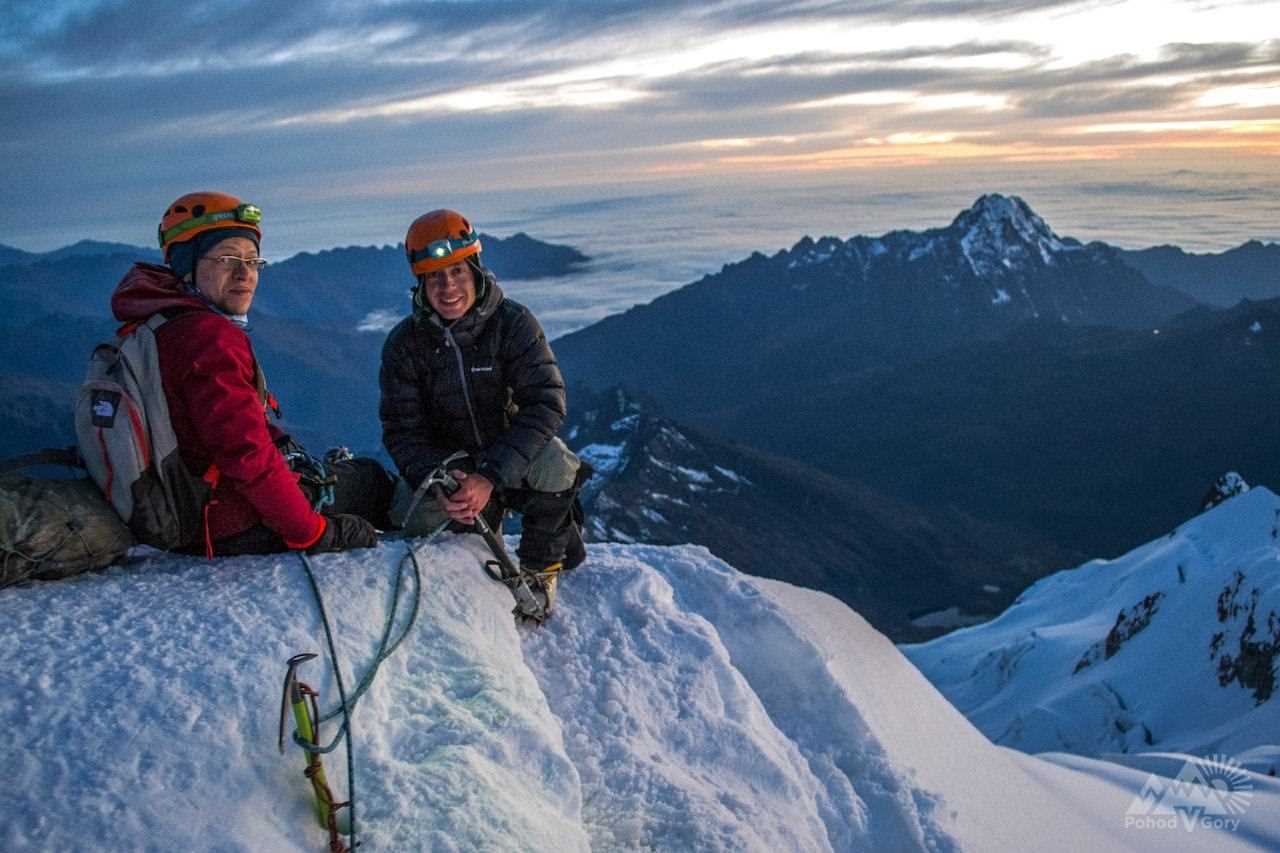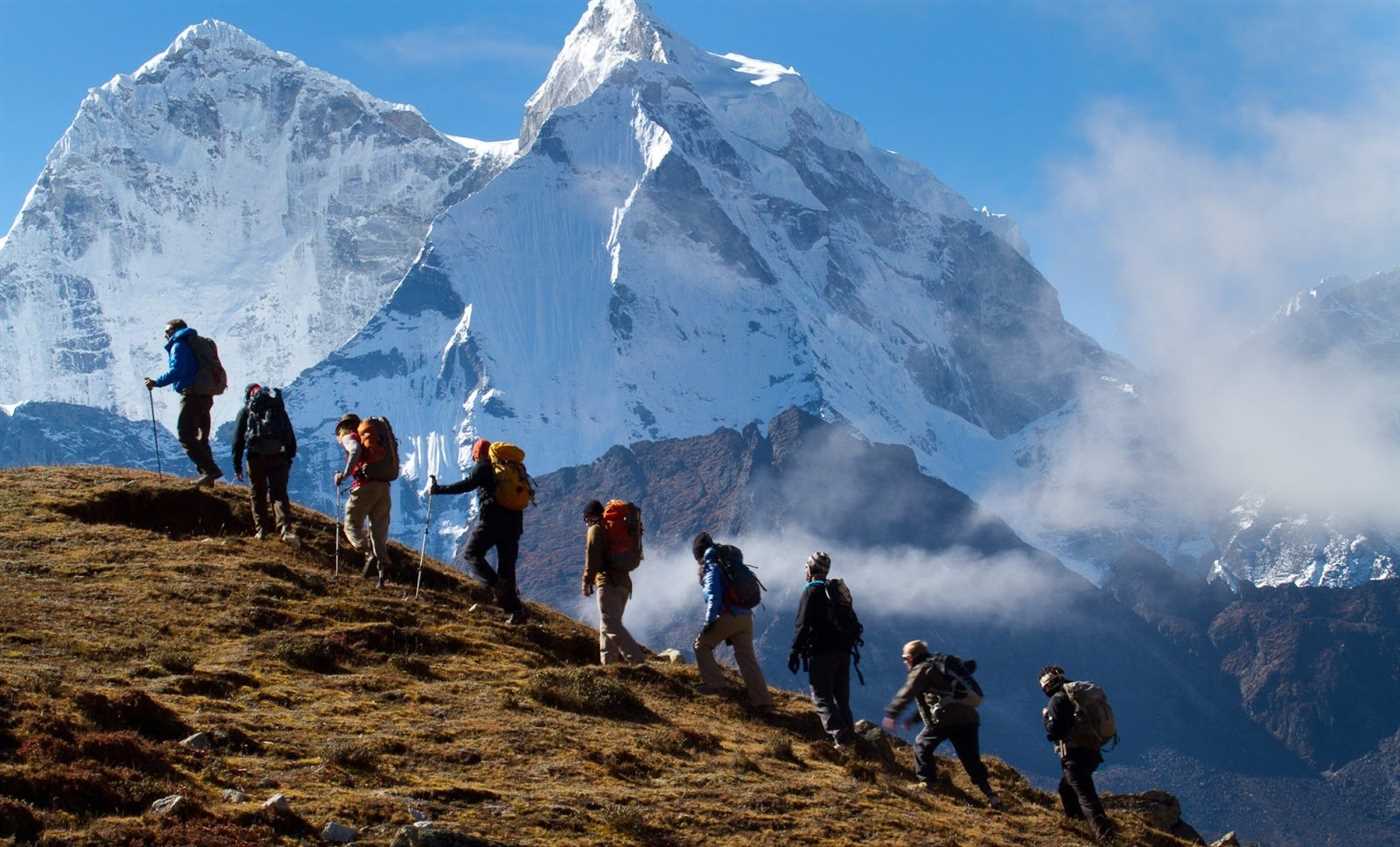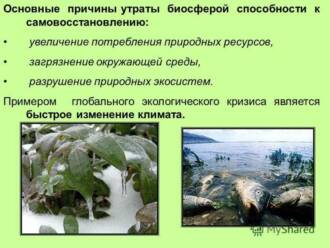
Mountains are a unique natural environment that provides special conditions for the life of various organisms. One of the most interesting and exciting groups that exist in the mountains are alpine butterflies. They have amazing adaptations that allow them to survive in the extreme conditions of high mountain regions.
Altitude, low temperatures, lack of oxygen – all these factors make life in the mountains difficult for many organisms. However, high-altitude butterflies cope with these difficulties thanks to their unique adaptations. For example, they have a special wing structure that allows them to easily maneuver in the air and adapt to various weather conditions, including strong winds.
Another important adaptation of alpine butterflies is their ability to tolerate low levels of oxygen. They have a special chemical reaction in their body that allows them to use oxygen more efficiently and survive at altitudes where most other organisms cannot survive.
Alpine butterflies: features of adaptation to life in the mountains
Life in the mountains presents many difficulties for animals: low temperatures, lack of oxygen, rocky terrain. However, highland butterflies have found ways to adapt to these extreme conditions.
Changes in body structure
One of the features of the adaptation of alpine butterflies is a change in the structure of their body. They have stronger and more muscular wings, which allows them to fly even at low temperatures and reduced pressure. They also have more developed chest muscles, which helps them to actively move and search for food on rocky terrain.
Specialized lifestyle
Alpine butterflies have a specialized lifestyle that helps them survive in mountainous environments. Some species are nocturnal to avoid strong solar radiation and cold temperatures during the day. Other species prefer to live at a certain altitude, where conditions are more favorable for their survival.
special coloring
Alpine butterflies often have special coloration that helps them survive in the mountains. Some species have a light color with a silvery sheen, which allows them to better scatter sunlight and retain heat. Other species have bright colors that serve as a signal to predators that they are poisonous or dangerous.
Climatic conditions of mountainous regions
The mountainous regions are characterized by special climatic conditions, which are very different from those in the lowlands. It is dominated by an alpine climate, characterized by low temperatures and high rainfall.
Due to the high altitude, mountainous regions are subject to strong winds and atmospheric pressure drops, which creates conditions for the formation of various microclimatic zones. At altitude, every 100 meters the temperature drops by 0.6°C.
Also, abnormal weather phenomena are often observed in the mountains, such as thick fogs, heavy rains and hail, which can have a significant impact on the flora and fauna.
One of the features of the climate of mountainous regions is the increased intensity of solar radiation, since at a high altitude of the atmosphere the filtration of ultraviolet rays is reduced. This affects the processes of photosynthesis and can lead to special adaptations of plants.
The climatic conditions of mountainous regions are of great importance for the life of alpine butterflies. They have developed many adaptations to enable them to survive and reproduce in such extreme environments.
Alpine butterflies: features of anatomy and physiology
Alpine butterflies inhabiting mountainous regions have a number of unique adaptations that allow them to survive in the extreme conditions of the highlands. One of the features of their anatomy is their smaller size compared to butterflies that live in the lowlands. This is due to the low oxygen content of the air at high altitudes, which limits access to resources and requires energy conservation.
Wings Alpine butterflies are wider and shorter in size, which contributes to better maneuvering in mountainous areas and allows them to quickly respond to changes in wind and temperature. It also helps them to travel long distances and overcome heights with minimal energy expenditure.
Besides, body Alpine butterflies have a special structure that allows them to better cope with low oxygen levels. They have a more developed respiratory system, including enlarged lungs and efficient blood circulation. This allows them to receive enough oxygen to maintain life in mountainous areas.
Anatomical adaptations
- Smaller wings: wide and short dimensions allow butterflies to maneuver in mountainous terrain and save energy.
- Enlarged lungs: a developed respiratory system helps butterflies get enough oxygen at high altitudes.
- Efficient blood circulation: Butterflies have an efficient blood circulation system to provide oxygen to the body.
Physiological adaptations

- Energy Saving: the smaller size and special structure of the wings allow butterflies to save energy when flying in the mountains.
- Temperature regulation: Alpine butterflies have the ability to regulate their temperature to adapt to climate changes in the mountains.
- Low oxygen tolerance: a developed respiratory system and blood circulation allow butterflies to survive at high altitudes with insufficient oxygen.
In general, the anatomy and physiology of highland butterflies represent an amazing adaptation to life in the extreme conditions of mountainous regions. These features allow them to successfully survive and reproduce in a harsh environment where access to food and oxygen is limited.
Mimicry and camouflage: how butterflies adapt to their environment
Butterflies living in alpine conditions have come a long way of evolution to adapt to the harsh conditions of their habitat. One of the most effective ways to adapt is mimicry and camouflage.
Mimicry — is the ability of butterflies to mimic their environment or other animals to hide from predators or deceive their enemies. Some species of butterflies have wings with patterns similar to the texture of rock or leaves, making them indistinguishable from their surroundings. This mimicry allows butterflies to remain unnoticed and avoid danger.
Camouflage — is another way that butterflies adapt to their environment. They can have wings with colors and patterns similar to the surrounding vegetation or rock formations. This camouflage allows butterflies to blend into the background and become virtually invisible to predators.
Some species of butterflies also use mimicry to scare predators. They can have bright and repulsive colors that warn predators of toxicity or danger. This allows the butterflies to scare off their enemies and keep their lives on the high mountain slopes.
Features of the behavior of alpine butterflies

Alpine butterflies have a number of unique adaptations that allow them to survive in the extreme conditions of mountainous regions. One of the features of their behavior is the ability to actively move to high altitudes. Thanks to special structures and mechanisms, alpine butterflies can travel long distances in search of food and mates.
In addition, alpine butterflies show special care and forethought in choosing a place for rest and breeding. They prefer places sheltered from the wind and cold, where they can keep warm and protect themselves from predators. Butterflies also choose flowers and plants that provide them with sufficient nectar and nutrients.
Alpine butterflies are also particularly active at certain times of the day. They are usually most active in the early morning and late evening hours when the air temperature becomes more comfortable for them. At this time, they actively fly, look for food and partners, and also mark their territories with special smells and marks.
It is also worth noting that highland butterflies have unique camouflage and mimicry abilities. They can mimic their surroundings by taking on the color and shape of the plants they inhabit. This helps them hide from predators and protect themselves from bad weather. Often, highland butterflies have bright colors and patterns on their wings, which help them attract the attention of partners and distinguish themselves from other species.
Nutrition and diet of alpine butterflies
The nutrition of alpine butterflies largely depends on the availability of plant foods in mountainous regions. They usually feed on the nectar of flowers, as well as the juices of plants and fruits. In conditions of mountain ecosystems where vegetation is limited, highland butterflies diversify their diet, including various types of plants and flowers that grow in these conditions.
However, in order to survive in the extreme conditions of the mountains, high mountain butterflies can also feed on other sources of nutrients. Some species may drink the juices of rotten fruits or local water sources such as streams or waterfalls. This allows them to obtain additional nutrients and water that may not be available in the limited vegetation of mountain areas.
The diet of alpine butterflies may also include minerals and salts, which are necessary for the normal functioning and development of their body. They can obtain these elements by eating mud or clay, which contains the substances they need. This is one of the adaptations of alpine butterflies to conditions in the mountains, where access to complete plant foods may be limited.
In general, the diet of high mountain butterflies includes a variety of food sources that allow them to survive and reproduce in the extreme conditions of mountainous regions. These butterflies are adapted to finding and using available resources to get all the nutrients they need to sustain themselves.
Reproduction and development of larvae in the mountains
Alpine butterflies living in the mountains have special adaptations for reproduction and development of their larvae in extreme conditions. They reproduce by laying eggs, which then turn into larvae.
Cold adaptations: Mountainous areas are characterized by low temperatures, especially at night. To ensure the survival of their larvae, high mountain butterflies choose warm places to lay their eggs, for example, under stones or in rock crevices. This helps to protect the eggs from cold temperatures and ensure their normal development.
Adaptations to lack of food: In mountainous environments, especially at high altitudes, food may be limited. Alpine butterflies choose plants that grow in the mountains and are able to survive under adverse conditions. Such plants usually contain enough nutrients for butterfly larvae. In addition, some alpine butterflies may have special feeding mechanisms that allow them to obtain nutrients from junk food.
Adaptations to lack of oxygen: In the mountains, the level of oxygen is lower than in the lowlands. Alpine butterflies are adapted to the lack of oxygen and are able to survive with low oxygen content in the air. The larvae of alpine butterflies have special respiratory organs that allow them to receive a sufficient amount of oxygen even with a lack of it in the environment.
Interactions with other species in mountain ecosystems
In mountain ecosystems, alpine butterflies interact with various animal and plant species. They are important links in the food chain and serve as a food source for birds, mammals and insectivorous animals. In turn, high mountain butterflies feed on the nectar of flowers, which contributes to the pollination of plants and the maintenance of biodiversity in mountain ecosystems.
In addition, alpine butterflies can interact with other species at the level of competition for food and habitat. Some butterfly species may compete with other insects such as bees and wasps for access to flowers and nectar. At the same time, highland butterflies may also depend on the availability of certain plant species to serve as their food source and oviposition site.
Butterflies can also interact with other species at the level of host-parasite interaction. Some species of butterflies are hosts for parasitic ichneumons, such as parasitoid insects, which lay their eggs in the bodies of butterflies or caterpillars. This can be harmful to butterflies, as parasites can destroy their internal organs and weaken their vitality.
Dangers and Threats to Alpine Butterflies
Alpine butterflies living in mountainous regions face many dangers and threats associated with extreme conditions and changes in the natural environment. One of the main dangers is the lack of food. In mountainous areas, vegetation is sparse and the growing season is short, which limits the butterflies' access to flowering plants and nectar sources. This can deplete their energy and threaten their survival.
Climatic conditions in the mountains also pose a danger to highland butterflies. Low temperatures and strong winds can seriously harm them. Butterflies can freeze or lose their wings due to high winds, making them more vulnerable to predators and making it difficult for them to move and find food.
However, the biggest threat to alpine butterflies is climate change. Global warming and anthropogenic impacts on nature lead to changes in ecosystems in mountainous regions. Plants on which butterflies feed and breed may become rare or disappear as a result of changing environmental conditions. This can lead to a decrease in butterfly populations and even their extinction.
In general, highland butterflies face many dangers and threats associated with the extreme conditions of mountainous regions. Lack of food, adverse climatic conditions and changing ecosystems all threaten the survival of these beautiful and unique insects.
Unique species of alpine butterflies
Alpine butterflies live in the extreme conditions of mountainous regions, where altitude, low temperatures and limited food create difficult conditions for their existence. Under these conditions, unique species of these insects have developed, which have adaptations that allow them to survive in mountainous areas.
One of the unique species of alpine butterflies is the mountain blizzard. It has a special wing structure that helps it adapt to low temperatures and strong winds. The wings of this butterfly have a denser structure and are covered with fine hairs, which helps to retain heat and prevent moisture loss.
Another interesting species of alpine butterflies is the mountain Apollo. He has developed special organs for obtaining food in conditions of lack of it in the mountains. The mountain Apollo is able to secrete enzymes that allow it to digest indestructible plant foods and obtain the necessary nutrients.
It is also worth noting the alpine stone-loving. It has the ability to adapt to the rocky conditions of the mountains. The stonelover has a coating on its wings that helps it blend in with its environment and hide from predators. Thanks to this type of disguise, she can go unnoticed and ensure her safety.
Impact of climate change on highland butterflies

Alpine butterflies are one of the most amazing creatures that can adapt to the extreme conditions of life in the mountains. They live at altitudes where the air temperature can drop below zero degrees and the availability of food is limited. However, with climate change, these butterflies are facing new challenges and threats to their existence.
An increase in average temperature and a change in climatic conditions in the mountains lead to a change in the distribution of vegetation, which is a food source for highland butterflies. Many of the plant species they rely on cannot survive in the new environment, resulting in reduced food availability for the butterflies.
In addition, climate change may lead to a change in the seasonality and duration of plant flowering, which may affect the synchronization of the life cycles of butterflies and plants. For example, if butterflies hatch before the flowering of plants begins, they may be left without food and die. Also, climate change may affect the availability of water, which is necessary for the survival of butterflies in the harsh conditions of the highlands.
All these changes in climate can lead to a decrease in the number and diversity of high mountain butterflies. They become more vulnerable to threats such as changes in predator distribution, competition from other species, and loss of habitats. In addition, alpine butterflies play an important role in the ecosystem of mountain regions, participating in the pollination of plants and serving as a food source for other animals.
Thus, climate change is having a major impact on highland butterflies, their life cycles, food chains, and the ecosystems in which they live. Conservation of these unique and important creatures requires action to combat climate change and protect their habitats.
Protective measures and conservation of alpine butterflies

Alpine butterflies are unique living creatures that have adapted to life in the extreme conditions of mountainous regions. Their colorful wings and exquisite patterns attract the attention of many people, but also make them particularly vulnerable to external influences.
To protect highland butterflies and preserve their population, certain measures must be taken. First, it is important to preserve their natural habitat - mountain landscapes. This includes the conservation of vegetation, which serves as a source of food and shelter for the butterflies. It is also necessary to prevent illegal logging and destruction of mountain ecosystems in order to preserve the integrity and biodiversity of these unique places.
The second important aspect of the conservation of highland butterflies is the limitation of the use of pesticides and chemicals in mountainous regions. These substances can negatively affect the health of butterflies, lead to their death and a decrease in the population. Therefore, it is necessary to control the use of chemicals and encourage agricultural and horticultural practices that do not harm highland butterflies and their habitats.
The third way to protect highland butterflies is to educate and inform the public about the importance of their conservation. People should be aware of the role of alpine butterflies in the ecosystem and that their extinction can lead to negative consequences for the whole nature. The creation of reserves and parks, where these butterflies can freely breed and live, also contributes to their conservation.
In general, the protection and conservation of alpine butterflies requires an integrated approach and the inclusion of all participants in society. Only by joint efforts can we ensure the preservation of these amazing creatures and preserve the richness of the nature of our planet.
The role of alpine butterflies in the ecosystems of mountain regions
Alpine butterflies play an important role in the ecosystems of mountain regions, contributing to the maintenance of biological balance. These small and colorful insects are one of the key links in the food chain of mountain ecosystems.
dust butterflies (also known as satyrs) play an important role in the pollination of flowering plants, which contributes to the reproduction of many plant species in the mountains. They carry pollen from one flower to another, ensuring plant fertilization and seed formation. Without the participation of highland butterflies, many plants would not be able to reproduce and maintain their populations in mountainous regions.
Alpine butterfly caterpillars also have a role in the ecosystems of mountainous regions. They are food for many birds, lizards and other predatory animals. Birds such as mountain tits and nuthatches actively seek out caterpillars for their food, especially during breeding season when they need to provide enough food for their chicks. Thus, high mountain butterflies are an important food source for many animals in the mountains.
One of the features of alpine butterflies lies in their ability to mimic and deceive enemies. Many species of alpine butterflies have a bright color that serves as a signal to predators that they are poisonous or tasteless. Thus, they can avoid attacks from birds and other predators. This defensive strategy helps alpine butterflies survive the harsh conditions of mountainous regions and continue their important contribution to the ecosystems of these places.






